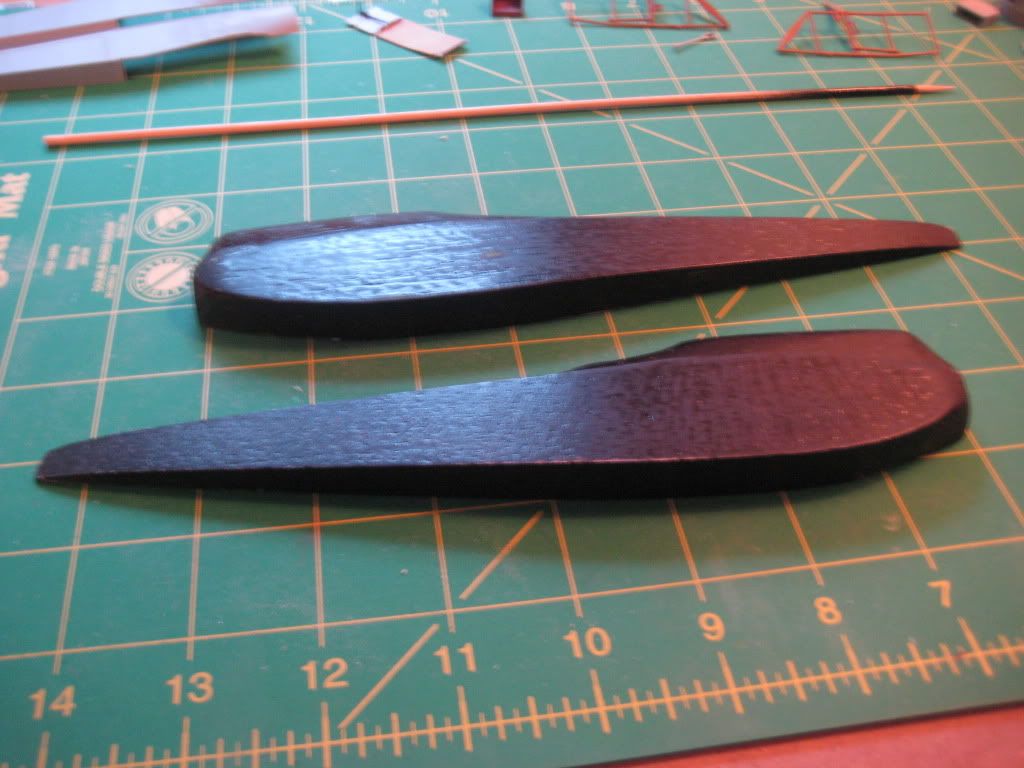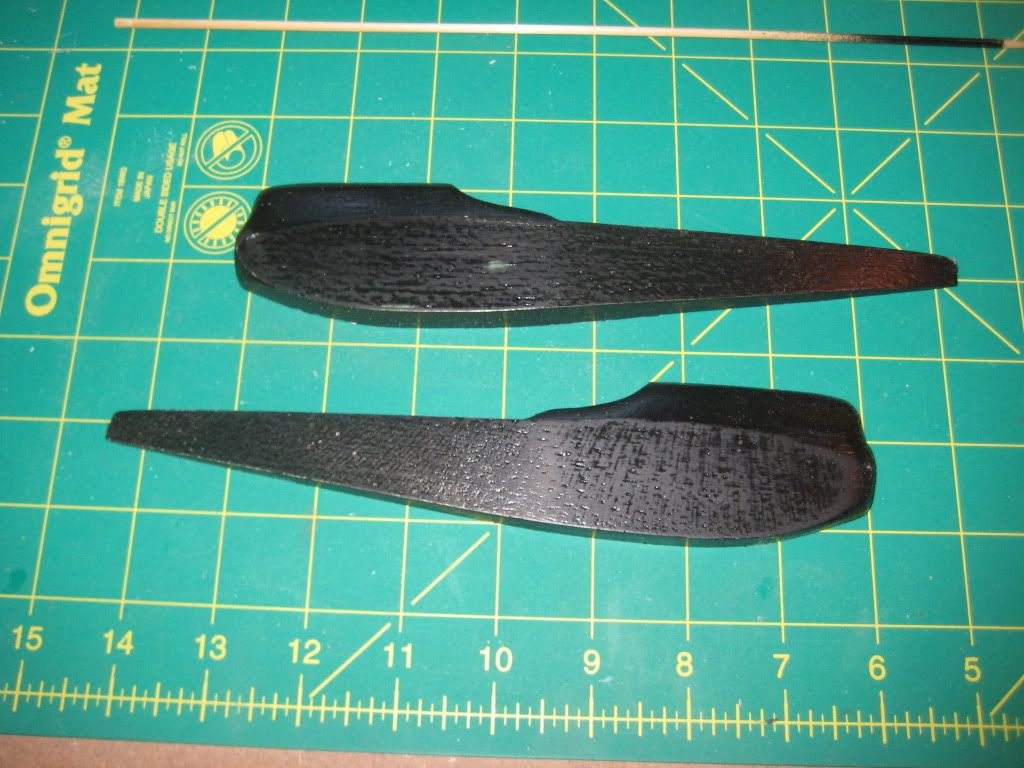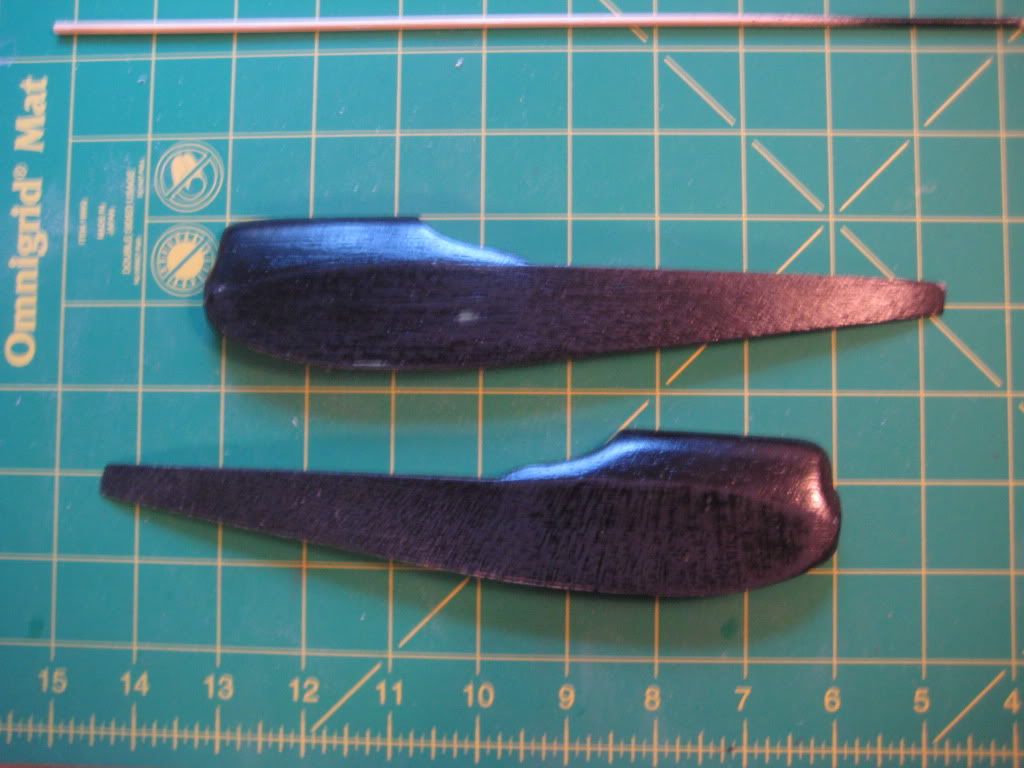Progress continues, though the path has some twists and turns. I've never done a vacuform master before, so I'm generally gleaning what I can from other modeling posts and trying things that seem to make sense. As noted, it will likely be a crooked path.

I sprayed the balsa master with rattle can shellac from Lowe's to seal it, sanding between coats. It was okay, but the shellac seemed to emphasize the wood grain rather than fill it in. I had a can of Krylon gloss black in the basement, so I decided to try that as a primer. It too did not fill the grain but instead revealed it.

I think this is an issue with a very soft wood like balsa. The price you pay for ease of carving and cutting. Now I have a good stiff surface which has some pitting of wood grain, so I will likely use some Bondo auto putty and see if that does the trick. I wonder if Mr. Surfacer would work better. Any thoughts?
Doug Bauman used CA to coat the balsa and then sanded it smooth. It sounded strange using CA on a relatively large flat surface, so I went with the shellac. Perhaps I should have followed Doug's method, or just used good old-fashioned sanding sealer.
In any event, I decided to split the master at this point, before the centerline seam was completely hidden by coatings. This proved a bit dicey as I obviously used too much white glue when I glued the wood halves together at the beginning. Persistence, an x-acto blade, a butter knife, and a razor saw combined to persuade the halves to part reasonably well, but not without some tense moments. Who says modeling is a tame hobby?

Here are the halves, with filler yet to be applied:



I will try smoothing the pitted surfaces of the master this weekend while also building the vacuform box. I am sure it will work out.

Regards,
Bob